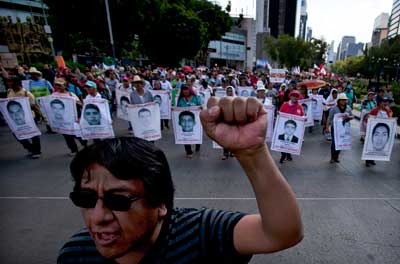Mexico City, April 25, 2016 – Mexican journalist Francisco Pacheco Beltrán was shot to death in front of his home in the city of Taxco, Guerrero state, on Monday, according to local press reports. Pacheco was a reporter for several regional newspapers and a regular contributor to a radio station.
“The endless cycle of violence against Mexican journalists is devastating the local press,” said Carlos Lauría, CPJ’s senior program coordinator for the Americas. “Federal authorities must thoroughly investigate the execution-style murder of Francisco Pacheco Beltrán and exhaust all possible motives, including links to his work as a journalist.”
Family members of Pacheco told CPJ that the victim was attacked in front of his home by an unknown number of assailants and received two gunshots to the back of his head, today just after 6 a.m., as he returned from taking one of his daughters to a bus terminal.
Another of Pacheco’s daughters told CPJ that she and her mother were in their home at the time of the attack. She said they heard two noises which sounded like firecrackers, and upon inspection found the lifeless body of her father near the front door of the house. She told CPJ there was no sign of the perpetrator.
Local authorities confirmed to CPJ that two bullet shell cases were found at the scene of the crime, but said there were apparently no witnesses to the murder.
Pacheco, 55, covered local news as a correspondent for the daily Sol de Acapulco; was the editor of Foro de Taxco, a weekly magazine; and contributed regularly to Capital Máxima, a radio broadcaster based in Guerrero’s state capital of Chilpancingo.
Pacheco also had a website, where he regularly posted articles on regional crime and violence–which in recent years has spiked in relation to organized crime and drug trafficking. The nearby city of Iguala was the scene of a mass abduction and suspected murder of 43 students in 2014, and both Taxco and Iguala have been the scene of a violent turf battle between rival criminal groups.
Some local media reports described Pacheco’s work as critical of local authorities and especially the mayor of Taxco. However, family members and colleagues told CPJ he had not reported having received any threats and did not seem concerned about his safety.
His most recent contributions to a Capital Máxima news show were about tourism in Taxco and confusion on social media caused by a fire. Pacheco also reported on violence in the coastal resort city of Acapulco.
“His murder is very surprising. He had been a contributor for us for several years, but I have never been aware of any threats he might have received,” Federico Sariñana, the editor of the radio news show with whom Pacheco collaborated, told CPJ.
Mexico is one of the most dangerous countries in the world to work as a journalist, according to CPJ research. Since 1992, at least 36 journalists have been killed there for their work, while dozens more have died in unclear circumstances. Mexico ranked eighth on CPJ’s 2015 Impunity Index, which highlights countries where journalists are murdered and their assailants go free.
